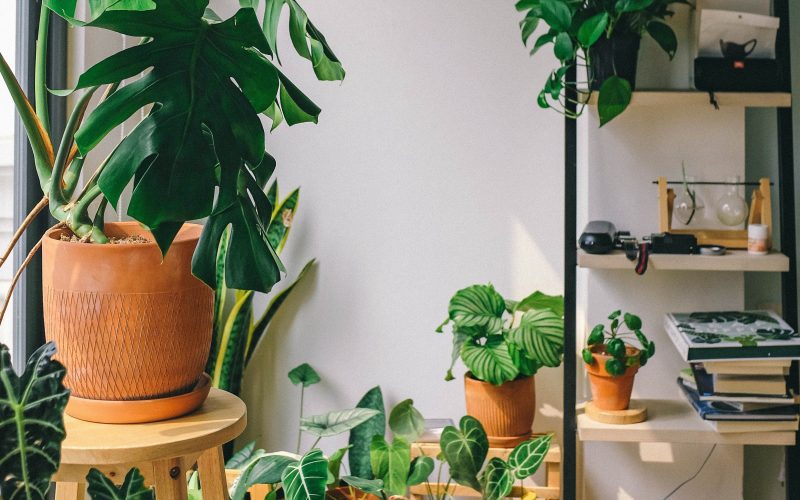Houseplants are a great way to liven up any room in your home. Not only do they give your space a little extra color and character, but they also have the power to purify the air you breathe. But with so many types of houseplants out there, it can be difficult to know which one is right for you and your living space. Whether you’re looking for an easy-care plant or something more exotic, this beginner’s guide will help you pick the perfect houseplant for your home. Read on to learn the basics of picking, caring for, and keeping your new green friend alive and thriving!
Decide what type of houseplant you want
When it comes to houseplants, there are many different types to choose from. If you’re a beginner, it’s important to decide what type of plant you want before buying one. Here are some things to consider when choosing a houseplant:
-What is the plant’s purpose? Are you looking for something to purify the air, or simply for decoration?
-How much light does the plant need? Some plants require direct sunlight, while others do better in low-light conditions.
-What is the plant’s watering needs? Some plants need to be watered daily, while others can go days or even weeks without water.
-How big does the plant get? Make sure you have enough space for the plant to grow.
Once you’ve considered these factors, you can narrow down your choices and choose the perfect houseplant for your home.
Consider the size of your home
The size of your home will play a big role in determining what kind of houseplant is right for you. If you live in a small apartment, you’ll want to choose a smaller plant that doesn’t require too much care. If you have a large home, you can go for a bigger plant that will make a statement.
Pick a houseplant that will thrive in your climate
If you live in a climate with very little natural light, choose a houseplant that thrives in low-light conditions, like the snake plant or Chinese evergreen. If you have a sunny spot in your home, consider a succulent or cactus. These plants are drought-tolerant and can handle direct sunlight. If you live in a humid climate, choose a plant that thrives in high humidity, like the Boston fern or peace lily.
Choose a low-maintenance plant
When it comes to houseplants, there are a lot of options to choose from. If you’re a beginner, you may want to choose a plant that is low-maintenance. Here are a few things to keep in mind when choosing a low-maintenance plant:
- Light requirements: Some plants need more light than others. If you don’t have a lot of sunlight in your home, choose a plant that doesn’t require much sun.
- Water requirements: Some plants need to be watered more frequently than others. If you’re not sure how often to water your plant, choose one that doesn’t need to be watered as often.
- soil requirements: Some plants prefer different types of soil than others. If you’re not sure what type of soil your plant needs, choose one that is tolerant of different types of soil.
Consider your pet’s needs
When choosing a houseplant, it is important to consider your pet’s needs. Some plants are poisonous to pets, so it is important to do your research before bringing a plant into your home. If you have a pet that likes to chew on things, you will want to choose a plant that is not toxic and does not have sharp leaves. You will also want to consider the size of your plant. Some plants grow very large and can take over a small space.
Find the right spot for your plant
When it comes to finding the right spot for your plant, there are a few things you need to take into account. First of all, you need to consider the amount of natural light that the spot receives. If the spot doesn’t receive enough light, your plant will likely become leggy and etiolated. Another thing to consider is the temperature of the room. You don’t want to put your plant in a spot where it will be exposed to drafts or extreme temperatures. Finally, you need to make sure that the spot you choose is appropriate for the size of your plant. A plant that is too large for its pot will quickly outgrow its space and become rootbound.
Water your plant properly
When it comes to watering your houseplants, there is no one-size-fits-all approach. The frequency with which you need to water your plants will vary depending on the type of plant, the size of the pot, the time of year, and the indoor environment.
Here are a few general tips for watering your houseplants:
- Water early in the day so that the leaves have time to dry out before nightfall. This will help prevent fungal diseases.
- Check the soil before watering. If it is still moist from the last watering, wait until it has dried out somewhat before watering again.
- Use lukewarm water. Cold water can shock the roots and damage the leaves.
- Apply water directly to the root zone of the plant, not just around the edges of the pot.
Fertilize your plant
When it comes to houseplants, one of the most important things you can do is fertilize them regularly. This will ensure that they stay healthy and continue to thrive. There are a few things to keep in mind when fertilizing your plants:
-First, make sure you are using a fertilizer that is specifically designed for houseplants. This will ensure that it doesn’t contain any chemicals or ingredients that could harm your plants.
-Second, always follow the manufacturer’s instructions when applying fertilizer. This will help you avoid over- or under-fertilizing your plants.
-Finally, be sure to fertilize your plants on a regular basis. This will help them stay healthy and prevent them from becoming nutrient deficient.
Conclusion
Decorating a home with houseplants can be an exciting and rewarding experience. We hope that this article has given you the knowledge and confidence to choose the perfect houseplant for your space. Remember, different plant species will require different levels of care, so make sure you research your desired plants thoroughly before making any commitments. Once you have found the right fit for your home, all that is left to do is enjoy its beauty!












